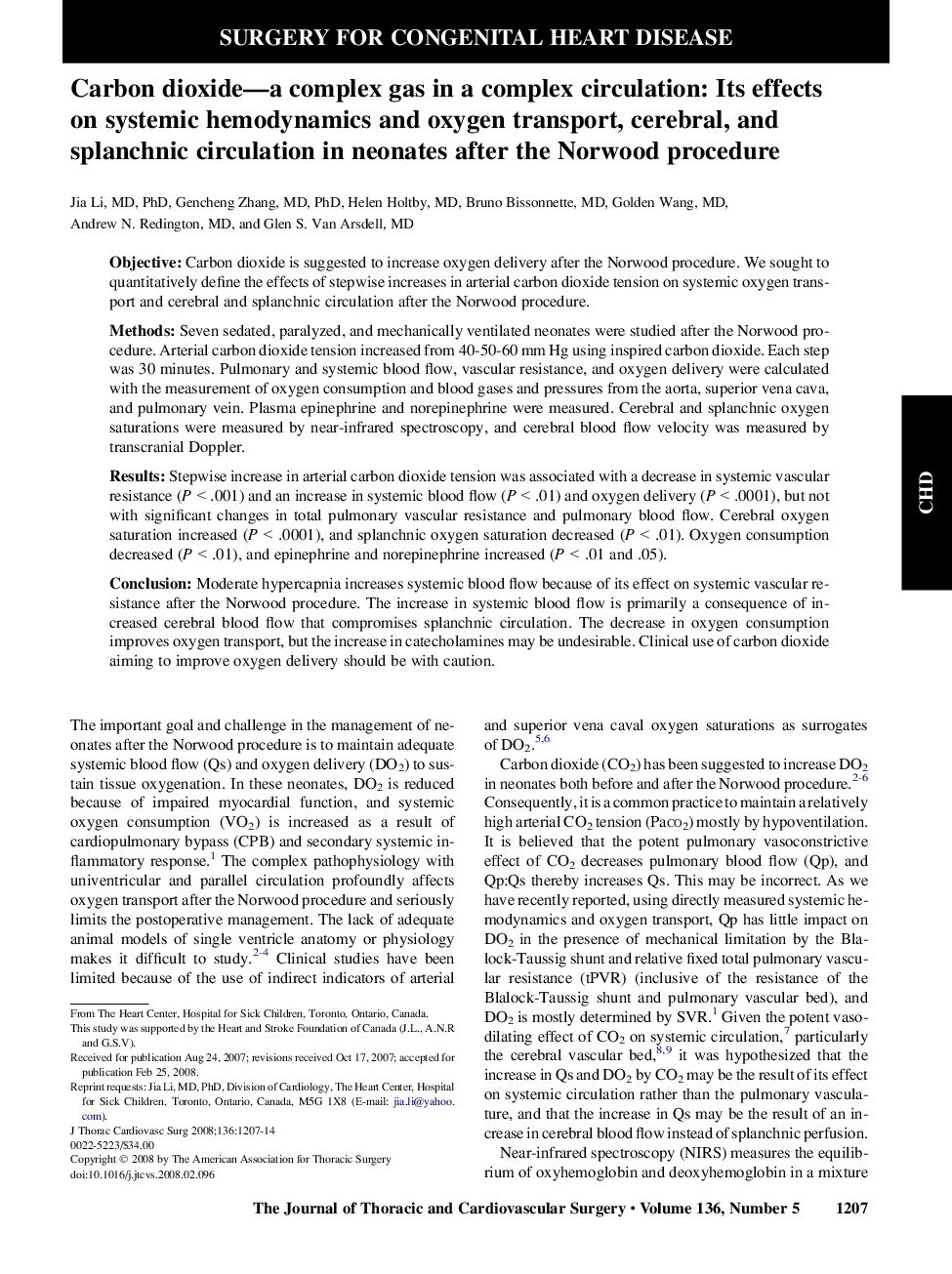| کد مقاله | کد نشریه | سال انتشار | مقاله انگلیسی | نسخه تمام متن |
|---|---|---|---|---|
| 2985008 | 1578680 | 2008 | 8 صفحه PDF | دانلود رایگان |

ObjectiveCarbon dioxide is suggested to increase oxygen delivery after the Norwood procedure. We sought to quantitatively define the effects of stepwise increases in arterial carbon dioxide tension on systemic oxygen transport and cerebral and splanchnic circulation after the Norwood procedure.MethodsSeven sedated, paralyzed, and mechanically ventilated neonates were studied after the Norwood procedure. Arterial carbon dioxide tension increased from 40-50-60 mm Hg using inspired carbon dioxide. Each step was 30 minutes. Pulmonary and systemic blood flow, vascular resistance, and oxygen delivery were calculated with the measurement of oxygen consumption and blood gases and pressures from the aorta, superior vena cava, and pulmonary vein. Plasma epinephrine and norepinephrine were measured. Cerebral and splanchnic oxygen saturations were measured by near-infrared spectroscopy, and cerebral blood flow velocity was measured by transcranial Doppler.ResultsStepwise increase in arterial carbon dioxide tension was associated with a decrease in systemic vascular resistance (P < .001) and an increase in systemic blood flow (P < .01) and oxygen delivery (P < .0001), but not with significant changes in total pulmonary vascular resistance and pulmonary blood flow. Cerebral oxygen saturation increased (P < .0001), and splanchnic oxygen saturation decreased (P < .01). Oxygen consumption decreased (P < .01), and epinephrine and norepinephrine increased (P < .01 and .05).ConclusionModerate hypercapnia increases systemic blood flow because of its effect on systemic vascular resistance after the Norwood procedure. The increase in systemic blood flow is primarily a consequence of increased cerebral blood flow that compromises splanchnic circulation. The decrease in oxygen consumption improves oxygen transport, but the increase in catecholamines may be undesirable. Clinical use of carbon dioxide aiming to improve oxygen delivery should be with caution.
Journal: The Journal of Thoracic and Cardiovascular Surgery - Volume 136, Issue 5, November 2008, Pages 1207–1214